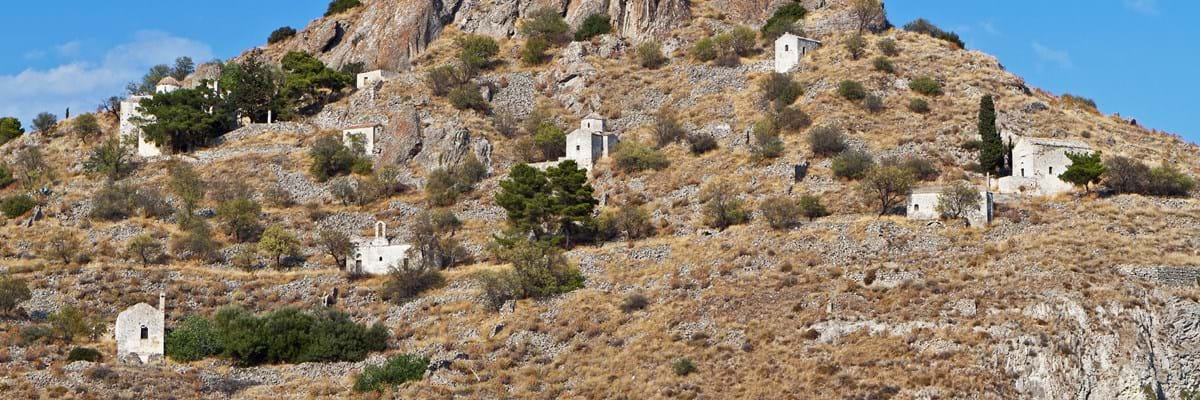It was the capital of Aegina island for centuries and at the centre of terrifying battles. An Archbishop who became a saint lived there in a cell. Now Paleochora is abandoned.
Invaded by pirates, sacked by the Venetians, a place of perhaps 365 churches and where a Saint lived in a cell. That’s Paleochora, capital of Aegina for nearly 1,000 years and now an abandoned site of cobblestones and ruins.
Islanders driven inland by persistent attacks by pirates built their new city on a hillside near the centre of the island in the 9th century. They chose the site of an ancient town, where pagan gods were worshipped, because it provided a great view of danger approaching from the sea. A castle was built on the rocky hilltop.

It is thought about 800 people lived there in homes that spread across the hill. Legend says there were 365 churches and chapels, one for every day of the year.
But a few centuries later pirates led by the notorious Barbarossa captured Paleochora after a bloody four-day battle. The churches were sacked, prisoners taken and the pirates stayed put.
However, about a century later the Venetians besieged and captured the city, destroyed the castle and took hundreds of prisoners - and life went on in Paleochora. It continued to be the main town on the island until 1826. By then the pirate threat had diminished and businesses and families moved to the coast.

What’s left? It’s called the “old town” and is completely abandoned. More than 30 churches and chapels are still dotted over the steep hill, some still in good condition and many with wall paintings. At least one saint’s day and Easter are still celebrated there.
Remains of tracks and buildings, water cisterns and fortifications are to be found in what is a serene and picturesque spot. There are still traces of the Venetian fortress on the hilltop where the views are spectacular.

Who was the saint? A man born on Zakynthos in 1547 who became a priest 23 years later and was appointed Archbishop of Aegina in 1577. He spent the next year living in a cell near his domed cathedral built into rocks at Paleochora.
Then he returned to Zakynthos where he lived until his death 44 years later. He was made Saint Dionysios of Zakynthos after it was discovered his body had not decomposed but was emitting a fragrance of frankincense and flowers.
Both the cell and the church remain in Paleochora which is between Aegina Town and Agia Marina.




